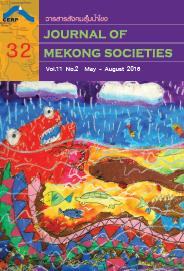Roles of Wild Food Plants in Ethnic Group Communities in Mondulkiri Province, Northeastern Cambodia
Main Article Content
Abstract
The present study describes the identification, documentation and ethno-botanical exploration of wild food plants in the Krang Teh and Romonear Communes, Mondulkiri province, northeastern Cambodia. A total of 32 plant species belonging to 25 botanical families were recorded in the study areas. Wild edible fruits comprised the highest proportion of the wild food species (17), followed by wildvegetables (8), and roots and tubers (7). Through focus group discussions with key informants, data on the perception, gathering, preparation and use of 32 wild food plant species was collected. Information on socioeconomic aspects must be taken into account when trying to understand the role of these plants in indigenous and local communities. Wild food plants are traditionally important as a supplement to the diet, particularly during food shortages, when they bring diversity and serve as a source of vitamins and minerals. Many of them play a hidden role in the economy of the rural areas where they are used for many reasons. However, because the nutritional values and possible toxic effects of these plants are not known, the information presented here might be helpful for further studies on nutritional values and possible effects. More attention is needed on sustainable management and market development of these products.


